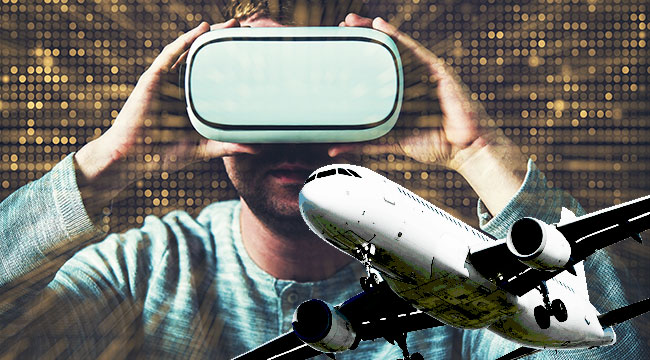
Due to its nature, travel has historically been a luxury for the physically and mentally able. Though there has been progress in making travel accessible for all, the problem remains — particularly in further flung locales. While there will never be a replacement for actually going somewhere, Virtual Reality is already allowing people the chance to explore the world for the first time. In fact, one of the most heartening advancements in the technology has been its application within the disabled community.
Fully immersive VR can take the viewer anywhere in the world and show them places outside their homes (or hospital rooms, in the case of the ill or infirm). This is proving to be not only enlightening and entertaining but therapeutic as well. Kim Lawther studies these advancements as an assistive technologist at Scope — which aims to make the lives of people living with disabilities fuller and less confined. Lawther reported in a HuffPost article that “Experiences like [VR] will massively improve young disabled people’s self-esteem and give them the confidence to engage in basic everyday activities.”
In short: VR is letting people who didn’t have the resources or ability to travel to get out there and see the world. This is turn is proving to be a therapeutic positive on their lives — consistent with general findings about how travel impacts human happiness.
While VR travel is helping the disabled community see and experience the world in new ways, it’s also helping the travel industry lure you into your next adventure, using the exact same media it uses within the disabled community.
VR experiences of surfing in Bali are being used to help muscular dystrophy patients surf for the first time and sell a would-be wanderluster on that IRL experience. So far, the numbers show that the average tourist or traveler is spending more money and taking more trips when they’ve been able to experience a destination, hotel, resort, climb, or surf in VR first.
This isn’t that crazy — movies have trailers, restaurants have Instagram, now travel has VR. The tourism industry is reporting a 190 percent increase in bookings since the advent and adoption of VR into their models. That’s not insignificant and likely to only grow and eventually become the norm across the board, as VR becomes a bigger and more natural part of the human experience. Plus, that extra travel means more money being infused into local economies where those travelers are going. Again, win-win.
It would seem we have VR travel on lockdown on this planet. Space is the next destination. The way we are envisioning going to Mars and other planets might be as archaic as colonialism itself. NASA is already integrating VR and holodecks into their missions. Here on Earth, NASA tested out a holodeck/VR tour of Mars from Buzz Aldrin at Kennedy Space Center in Florida. But it goes far beyond that.
NASA is using VR and satellites to explore all of our solar system and galaxy in 3D for the first time. Their application of VR is starting to be used on Parabolic flights for tourists to experience “space” via a VR headset and feel weightlessness simultaneously. NASA has even started experimenting with using cranes with harnesses attached to people to simulate different gravitational pulls on different planets while using a headset to make going to another planet actually feel, physically realistic.
The Mars 2030 project headed by Fusion Media and MIT’s Aeronautics and Astronautics department works closely with NASA to develop a fully immersive Mars VR experience according to NASA’s science, tech, and data on the red planet. The head of the program states that “The goal here is to create an experience that everybody can have, and go to Mars and be an astronaut and go on missions that unlock what Mars is.”
The travel industry is already using VR to tempt tourists to far-flung locales. NASA, Silicon Valley, and universities are using these Mars experiences to tempt us into space travel in the very near future. The idea behind all of this is to get us ready to actually go out there one day.
So it begs the question, with NASA already using VR to more thoroughly explore Mars and our solar system, how long will it be before we’re all taking a trip to Mars where we feel it’s gravity and can climb its mountains and be the trailblazing explorers of a new planet? Or, will that trip even be necessary? Maybe we can send robots in our stead. Many scientists have started to question whether humans will need to travel in space at all thanks to a collision of VR, robotics, and, everyone’s most recent darling, AR.
Augmented reality exploded into the cultural zeitgeist with Pokemon Go. It’s become ingrained in the human experience, too… for the part of humanity that has smartphones anyway. So while VR makes us able to see and possibly even feel other planets, AR will allow us to interact. We’ve already gotten used to interacting with a Pikachu through our phones. It’s only a small step to start moving rocks and digging for minerals via robotics on the ground on some far off planet while we sit comfortably in a park on Earth. It’ll be like Minecraft, but real. So, maybe we’ll all be space tourists and space miners in the future without having to worry about the rigors of deep space travel and getting our hands dirty on Rigel Seven.
Or, maybe, VR and AR are just the necessary stepping stones for a new generation of explorers — unlimited even by their own bodies — whose horizons will be interstellar. Either way, we can’t wait to find out.
